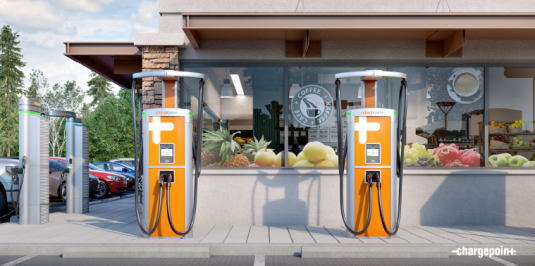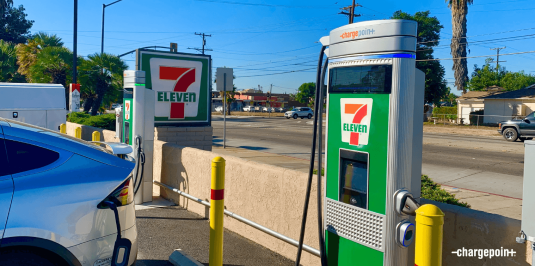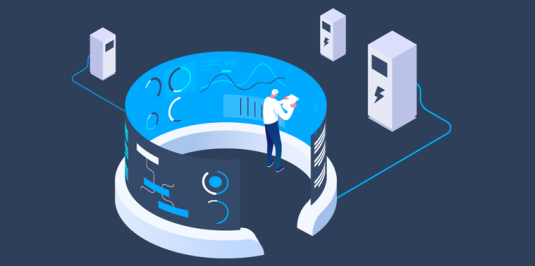
Imagine if you were able to reinvent personal mobility from the ground up today. Would you start with an electric drivetrain? Knowing what we do now, of course you would. You certainly wouldn’t send drivers off to some out-of-the-way place where they had to scan the highways for a place to fill up. You’d let them top up at home or wherever they happen to be, just like they do with all their other devices. If they were on a road trip or traveling beyond their battery range, you’d give them an app or integration to route them to the most convenient charging location for them. That might include an opportunity to stretch their legs, grab a meal or even do some shopping. As EV adoption takes off, more and more businesses are beginning to realize that we’ve been doing fueling wrong all along — and it’s going to change everything.
A century of missed opportunities
The old model of fueling wasn’t simply inconvenient, it was also completely misaligned with how people live their lives. We live in an age of technological marvels, yet cars — largely because of how they’ve needed to be powered — have always seemed like they were out of another era. With battery electric vehicles (BEVs) set to outsell both traditional and plug-in hybrid (PHEV) passenger cars in North America and Europe by the end of this decade, we are at the beginning of an evolution in transportation not seen since the invention of the Model T. But unlike previous transformations that consolidated technologies (the iPhone) or improved efficiencies (Airbnb, Uber, Netflix), this one will be a complete reimagining of how we move about in the world. From salons and wine shops to fine dining establishments and event spaces, businesses are poised to take advantage of the coming revolution in fueling — and it’s going to dwarf those disruptions that came before.
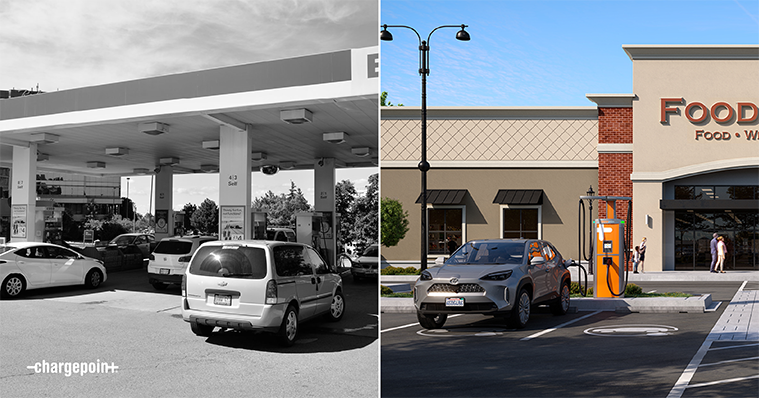
Putting the experience back in driver experience
Let’s face it, driver experience isn’t what it used to be. Blame fossil fuels. The golden age of automobiles, which predated the understanding that cars were one of the main culprits behind climate change, was brief — lasting from sometime shortly after the Second World War until the beginning of the gas crises of the early 1970s. Back then, sleek speed demons and rumbling muscle cars ruled the streets. There was an idea that the open road meant freedom, opportunity and entrepreneurship. That romanticism ground to a halt as people faced the realization that oil was a strategic commodity, subject to wild price fluctuations depending on whatever was happening in the regions where it was produced. People began choosing automobiles that offered practicality over performance. It was the end of an era. Until now. EVs, unencumbered by concerns over greenhouse gases (GHGs) and untethered to the handful of companies that have long controlled the fuel supply, are bringing back driver experience better than ever. And, with it, an entirely new way of life.
The emerging 30-minute retail economy
Rather than having to go somewhere to go somewhere, most EV drivers charge when they’re parked. But when they’re on a road trip or unexpectedly exceed their battery’s range, there are already businesses catering to their every whim while they charge — and even creating new whims. Unlike fossil fuels, electricity is inexpensive (compared with gas), pervasive and safe — and it can be distributed wherever there is a plug. That means the fuel supply is no longer controlled by a handful of companies nor is it regulated as a toxic substance. It’s available to any business that wants to sell it or give it away to their customers, employees or the public. Because of the average dwell time for most EVs, electrification will allow drivers to do all kinds of things besides grab a bag of chips, a package of beef jerky and a soda. And it gives existing businesses and entrepreneurs countless opportunities to serve that captive audience of weary travelers. The coming 30-minute retail economy will change everything from getting a haircut and planning a night out to choosing where and what to visit on our vacations.
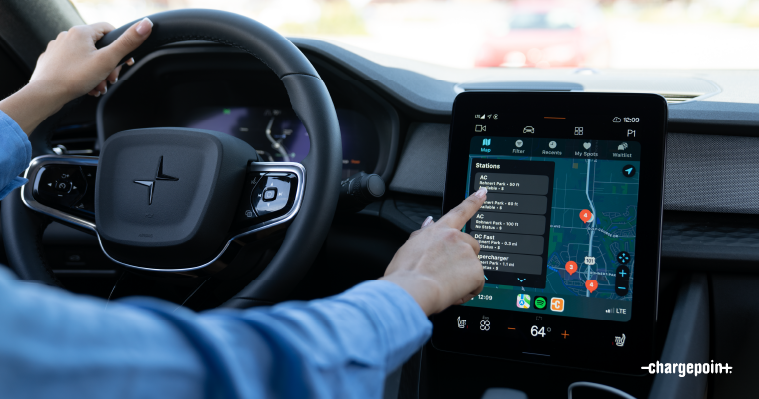
Fill up versus top up
We now know that powering our vehicles with fossil fuels contributes to a lot of humanity’s current problems. Sadly, it’s taught generations of people that filling up our tanks at some out-of-the-way location is “normal.” Just as the cellphone untethered us from the landline and the iPhone freed us from our desks, the EV will allow us to escape the gas station, allowing people to connect with others while doing the things they enjoy and letting them choose how to spend the most significant resource they have — their time. Eventually, entire charging hubs composed of dozens of charging stations and yet-to-be-conceived activities will fulfill whatever people’s hearts desire while they fuel. Cleaner air, less noise pollution, zero GHG emissions and even lightning-fast, technology-laden supercars will be just a bonus.


